This is Bryan, today I’m telling you what information you should know from DFM report, why it’s so importance? When we making a new mold, a Design for Manufacturability (DFM) report is a critical tool that provides valuable information to ensure the design is suitable for efficient and cost-effective manufacturing processes. Below are some key points of information you should know from a DFM report:
- 1.Part Geometry: The DFM report should include detailed information about the part’s geometry, such as dimensions, features, and tolerances. This is crucial for understanding how the mold needs to be designed to produce the part accurately.
- 2. Material Specifications: Information about the material to be used for the part is essential. It includes material type, properties, and any special requirements or considerations for molding that material.
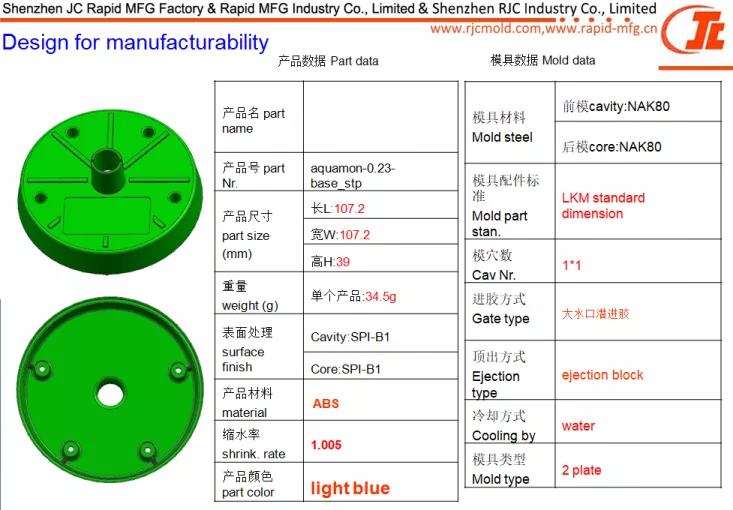
- Draft Angles: The DFM report should specify the required draft angles for the part.Draft angles are necessary to allow for easy ejection of the part from the mold after molding.
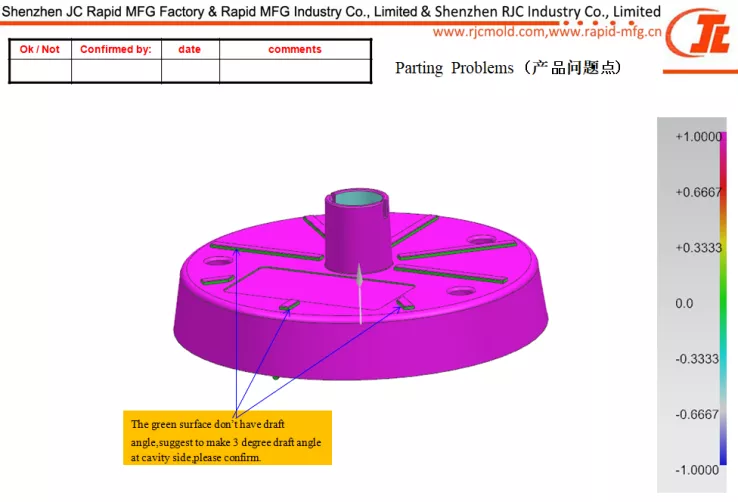
- Wall Thickness: The report should indicate the recommended wall thickness for the part.This is important to ensure proper flow of molten material during molding and to avoid defects like warping or sink marks.
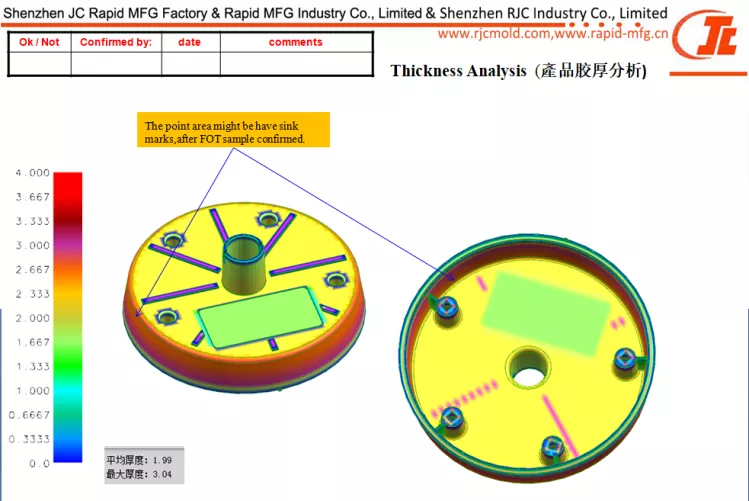
- Undercuts and Features: The DFM report should highlight any undercuts or intricate features on the part.These features can affect the mold design and may require additional measures, such as slides or lifters, to ensure proper molding.
- Gate and Runner Design: Information about the recommended gate and runner design is crucial.The gate is the entry point for molten material into the mold, and the runner system distributes the material throughout the mold cavity.
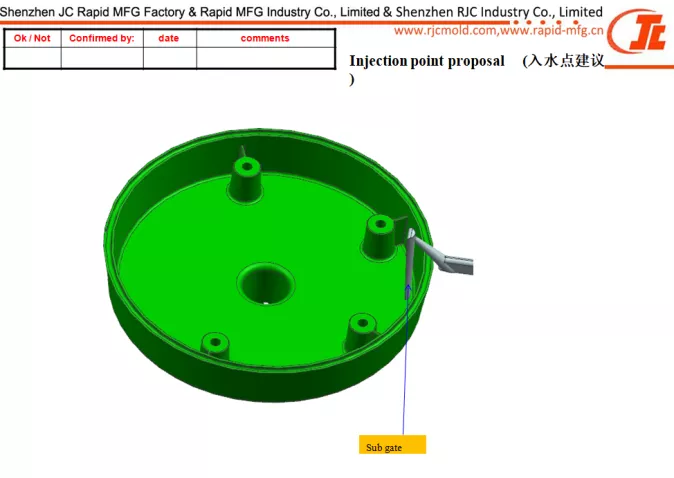
- Cooling System: The report should discuss the cooling system design, which is essential for controlling the temperature during molding and reducing cycle times.
- Parting Line: The DFM report should define the parting line, which is the separation line between the mold’s two halves.It is critical for determining how the mold will be split to remove the molded part.
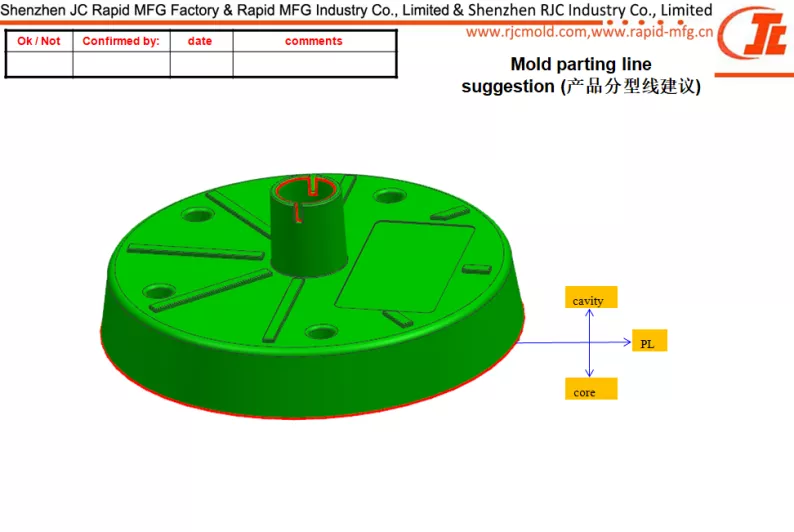
- Tolerances and Critical Dimensions: Any critical dimensions and tolerances for the part should be clearly identified in the report. This information helps to ensure the mold is designed to meet the required specifications.
- Material Shrinkage: The DFM report should include information on material shrinkage rates, as different materials shrink at varying rates during cooling, affecting the final dimensions of the molded part.
Mold Tooling and Manufacturing Process: Information about the intended mold tooling, manufacturing processes, and any special considerations is essential for ensuring the mold design aligns with the planned manufacturing method.
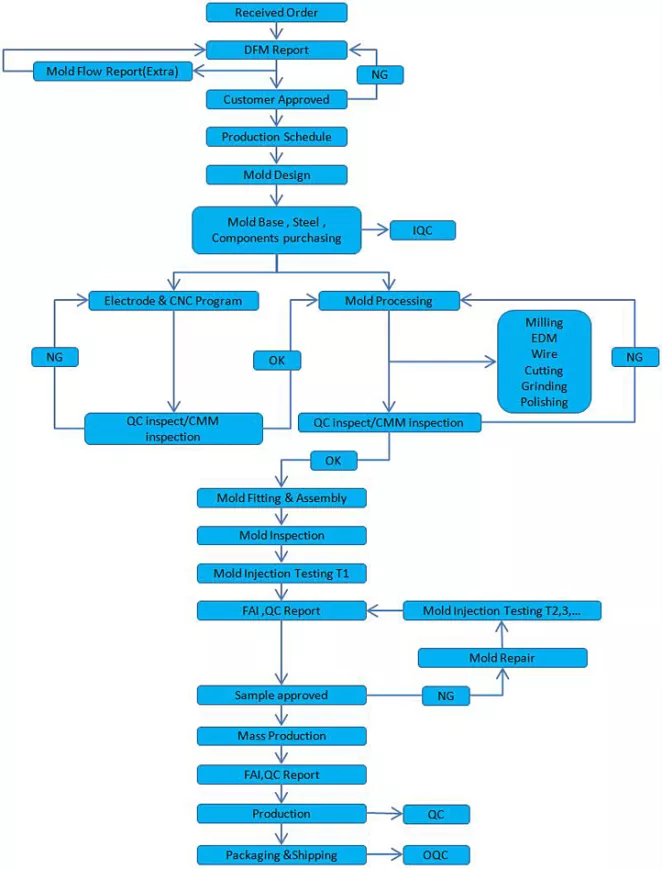
By thoroughly understanding and analyzing the information provided in the DFM report, you can make informed decisions during the mold design process, leading to a successful and cost-effective manufacturing outcome. Collaboration between the design and manufacturing teams is crucial to address any potential issues or challenges early in the process.
You must be know what to do when you make a new injection mold after reading above informations. RJC is a one leading company on mold manufacture and injection molding production, welcome to contact us any time if you’re ready to make molds for your project. My email is [email protected], expecting your email soon. Good luck.

